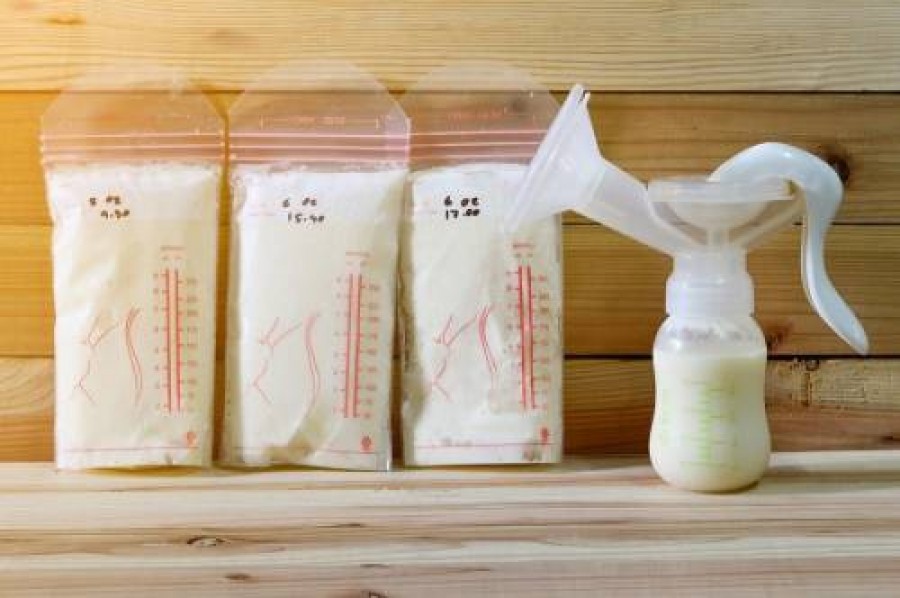Let-Down Reflex

Many women choose to breastfeed their baby, and this can be an enjoyable and an emotional bonding experience for both mother and baby. Some women struggle with breastfeeding, finding it difficult and sometimes even painful to breastfeed, and that’s perfectly normal, every mother is different.
Some women report feeling worried that their baby is not getting enough milk when breastfeeding and it’s important to understand how your body works and responds to your baby’s need for milk. One thing you will hear your midwife talk to you about when breastfeeding is the let-down reflex.
What is the let-down reflex?
The let-down reflex is your body responding to your baby requesting milk. When your baby begins to suckle for milk they trigger nerves in your nipple that send a signal to your body. Your body responds to this signal by releasing two hormones called prolactin and oxytocin.
Prolactin acts on the milk-making tissues in your breasts, causing them to produce milk, and oxytocin causes the breast to push out or ‘let down’ the milk to your baby. Oxytocin also causes your milk ducts to widen and makes it easier for the milk to flow through your nipple to feed your baby.
Put simply, the let-down reflex makes the milk in your breasts available to your baby. Some mothers are very sensitive to this reflex and may experience the let-down reflex even just looking at, or thinking about their baby, before the baby is physically suckling.
What does it feel like?
The physical sensation of the let-down reflex can vary from mother to mother, but you may experience one or all of the following physical sensations when the let-down reflex occurs:
- A pins and needles like sensation, that may start under your arm and then move across your breasts – this can feel quite strong at first
- A sudden feeling of ‘fullness’ in one or both of your breasts Milk dripping or leaking from your other breast while feeding your baby
- A change in the way your baby suckles – they may move from a quick repetitive suck, to a much slower and drawn out suckling
- Cramping in your uterus – especially if this is your first pregnancy and experience of breastfeeding. Oxytocin is also the hormone that causes the uterus to contract.
Breastfeeding can help speed up the healing of your uterus, and help it return to it’s normal size due to the release of oxytocin.
The let-down reflex can occur more than once during the feed, but most mothers normally only notice the first time it happens. Many mothers report growing accustomed to the let-down reflex and feeling it less and less the more they breastfeed, and the more they settle into the new routine of feeding their baby.
Should I swap my baby between my breasts for milk if I struggle with the let-down reflex?
When you breastfeed your baby, you produce two different types of milk.
The first milk your baby will feed on is often referred to as the fore-milk. This milk is rich in protein and will satisfy your baby’s immediate hunger. You will notice that your baby drinks this milk quickly and their sucking is quick and repetitive.
When the let-down reflex occurs, your breasts ‘let-down’ a different type of milk, often referred to as the hind-milk. This milk is rich in good fats for your baby and this is when you may notice your baby’s suckling slows down and becomes more drawn out, as they work a little harder to drink this milk.
Your baby needs both of these types of milk. It is important to make sure your baby drinks fully from your breast before switching, so your baby gets plenty of both. If you are struggling with the let-down reflex, it could be due to a number of reasons, including stress, anxiety, being uncomfortable or in pain.
How can I help my let-down reflex when breastfeeding?
There are a few different things you can try to help encourage the let-down reflex when feeding your baby, and to ensure your baby gets a full feed of the milk they need. These include:
Relax:
Make sure you are in a quiet, comfortable environment where you won’t be disturbed and can focus on feeding your baby
Get comfortable:
Take a comfortable seated position and position your baby so that they and you are comfortable. Read more on Top 5 most comfortable breastfeeding positions here.
Be prepared:
Wear non-restrictive breastfeeding clothing – nursing bras are ideal as they are specifically designed to aid you breastfeeding your baby
Gently massage your breast:
This can help with stimulating your nerves and encouraging the release of prolactin and oxytocin to encourage milk production
Get support:
Having a support person can help you relax and feel normal – this could be a close maternal family member, or friend who is also a mother
How can I help my let-down reflex when expressing?
Some mothers express their milk using a breast pump and bottle their milk to feed their baby later. This can be useful when taking your baby out for the day or leaving your baby with another care provider. Encouraging the let-down reflex can feel more difficult when you’re not physically feeding your baby. To help with this you could try:
- Staying near your baby, looking at your baby, or even looking at a photo of your baby to encourage the let-down reflex
- Massaging your nipple to stimulate the nerves and encourage your body’s natural response to let-down milk
- Stay relaxed as stress can inhibit your let-down reflex
It’s important to remember that no matter if you are breastfeeding or expressing, making and delivering milk for your baby is one of your body’s most natural functions. If after trying the above methods, or similar techniques to encourage your let-down reflex you are still not having much success it is important to seek medical advice, to make sure your baby is receiving enough nutrients.
Consult with your midwife or doctor for advice and support. They can advise you on the best approach for you and your baby, and work with you to make sure your baby is fed, happy and healthy.
Most Viewed
-
5 Common Methods of Contraception
Last updated On by Percy Oad -
How to Cope with Male Infertility
Last updated On by Alina -
What is the Difference Between Primary and Secondary Infertility?
Last updated On by Madison -
How to start a child-free life after infertility
Last updated On by Jacinta







